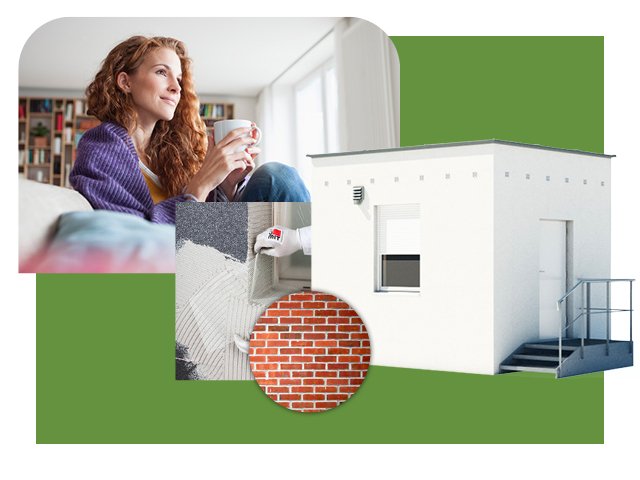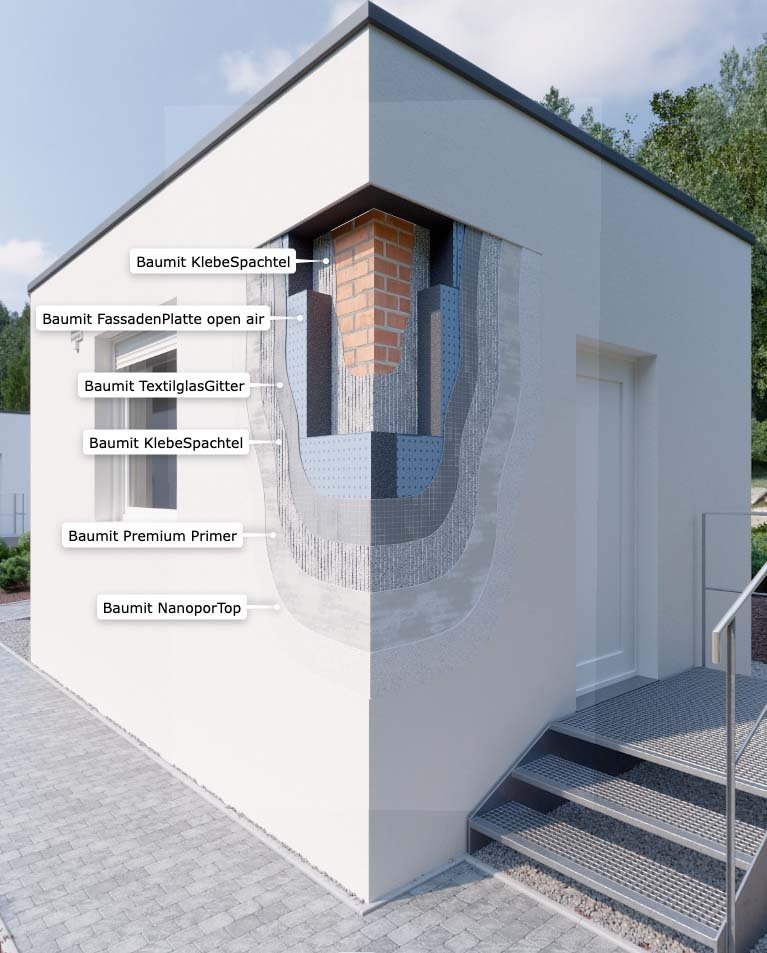High ceilings, charming neighborhoods and stunning facades make living in historical buildings so appealing for many urban residents. Subsequent adjustments of the building material help match the indoor living quality with the top-notch look.
Keeping the charm and beauty is on the top of the list when it comes to traditional buildings – whether due to regulations or to increase the value of the building. At a closer look the indoor quality often does not go together with the first impression. Residents complain about air drafts and huge utility bills – just to name a few – because of insufficient focus on the living quality by the owners which can lead to a high turnover of tenants and increase admin work for the owner. The VIVA research team in Wopfing, Austria wanted to learn in-depth how to improve the living quality in older buildings.
How adding insulation can improve the Indoor climate in Günderzeit-houses
Especially when it comes to renovating historical older buildings, people fear that adding ETICS at a later stage would increase the air humidity and lead to a less comfortable indoor climate as well as mould. A reason for Baumit to test this assumption scientifically.
By using the Baumit research houses of the VIVA Park in Wopfing, Austria, our R&D team gained new insights about the effect of insulation on the indoor climate in historical older buildings. Two test houses made of full brick were selected, the only difference between the two houses being an insulation added to the walls. With the help of the Technical University Vienna the different user behavior scenarios were simulated and interpreted, proving that even extremely solid construction needs insulation to make the indoor climate more comfortable for Gründerzeit-houses.
More benefits as a result of insulation
Humidity peaks in summer as well as in winter can be reduced, especially when combined with proper venting of the rooms. With Baumit Open, the breathable insulation system with 99% air, humid brick walls dry up more quickly after renovation, taking only half of the time needed without thermal insulation. Another benefit of applying insulation at a later stage: The wall temperature inside rises to a comfortable degree and thus helps to prevent mould.
Thermal renovation being topic number one this year, these findings add further reasons in favour of insulating Gründerzeit-houses with full brick walls:
External wall Insulation Systems lead to huge energy savings. Due to insulation, the building doesn’t heat up or cool down so quickly, which is a significant contribution to the energy efficiency of the building. And what is more, the living space is a space without draughts, making living in newly insulated Gründerzeit-houses healthy due to the improved indoor climate. When it comes to the value of the building, it goes without saying that professional insulation affects both: Not only the building value, but also the property value will grow on the long run.


